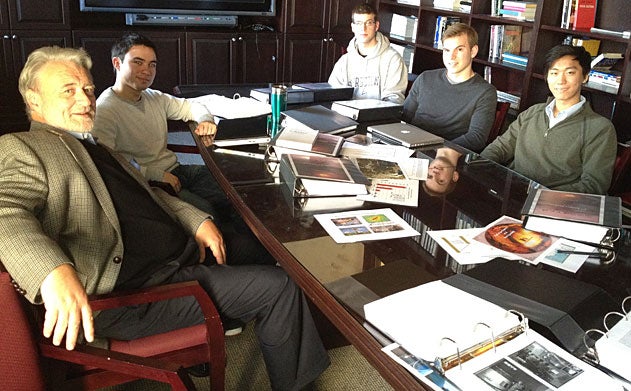Title: GU Students Help Discover China’s Hidden Nuclear Tunnels
A group of Georgetown students and their professor have discovered a 3,000-mile-long tunnel system China has built to protect and store its missiles and nuclear weapons.

The finding was widely reported in the media.
“What students did is really a remarkable piece of work,” former Ambassador to the United Nations John R. Bolton said of the project on Fox News this past Wednesday.
The former under secretary for arms control and international security added that the “students have given us new insights that our intelligence agencies should be taking a look at.”
Pedagogical Exercise
Phillip A. Karber, scholar-in-residence at Georgetown’s Institute for Law, Science and Global Security, led the study.
“For me fundamentally it’s a pedagogical exercise,” says Karber, who worked as a strategist at the Department of Defense during the Cold War. “[Students] can study theory and they can read history and they need to. But there’s something about being able to actually get involved in a real research project and feel like you’re covering stuff and the excitement when you’re digging around.”
About 20 of Karber’s students in his China Arms Control and Military Strategy and Foreign Policy classes spent the past three years researching mounds of data ranging from Chinese blogs, news clips and military journals to online video clips, message forums and docudramas on artillery soldiers.
In Lieu of a Paper
Karber asked them to look at videos and documents during class and postulate what the evidence showed, and that laid the foundation for students to analyze the information much like an intelligence analyst for the Department of Defense.
Students, several of whom were fluent in Chinese, either participated in the project in lieu of writing a final term paper or at the invitation of the professor.
“I wasn’t interested in doing a traditional paper for this … so I pushed Dr. Karber on what is interesting that might have a lasting impact on maybe the world,” says William Kim (SFS’13), an international politics major. “Of course I had no idea Dr. Karber would come back to me and say I want you to investigate China’s secret tunnels.”
Outside the Classroom
Kim and other students such as Nick Yarosh (SFS’12) put in 20 to 30 hours of work outside the classroom each week as they aggregated and analyzed open-source information from China.
“It took a strong hit in my social life to be honest,” says Yarosh, who spent a month and a half categorizing 4,500 pages of documents and other information for the project. “It’s giving up a lot of time understanding that I’m going to miss as lot of really fun social events because I have important things that I’ve committed to and that I enjoy doing.”
Up to the Task
Karber says the United States government spends millions on similar analyst work and believes that intelligent and motivated students are up to the task to produce similar results as a paid analyst.
“I think we have some of the best undergrads in the world and to me it shows they can actually do stuff even beyond what we typically think undergrads can do,” he said. “They can do quality research and do it well and I think for those who are interested to see that’s possible is liberating and would actually have some real avenues of growth for the university.”